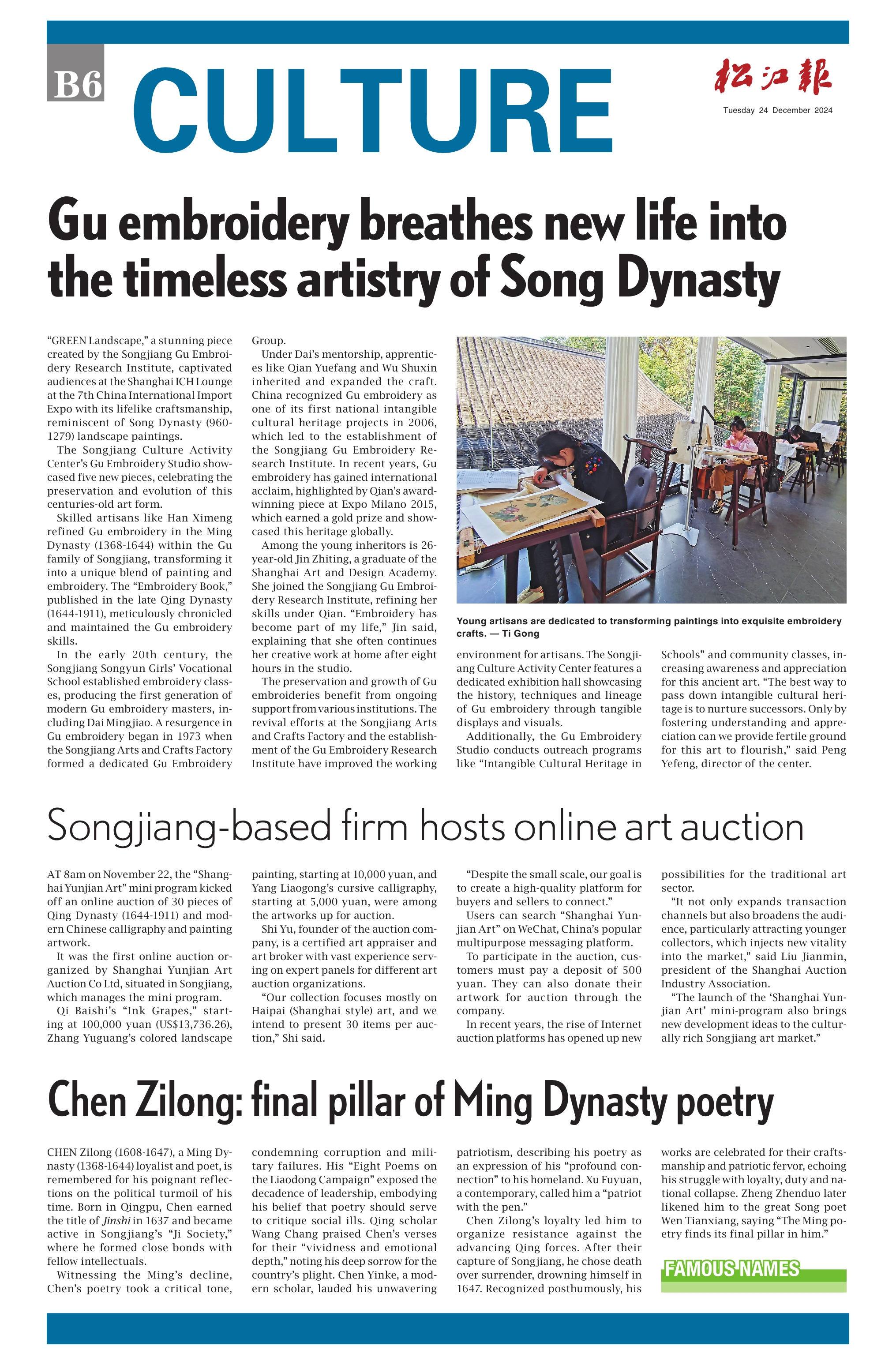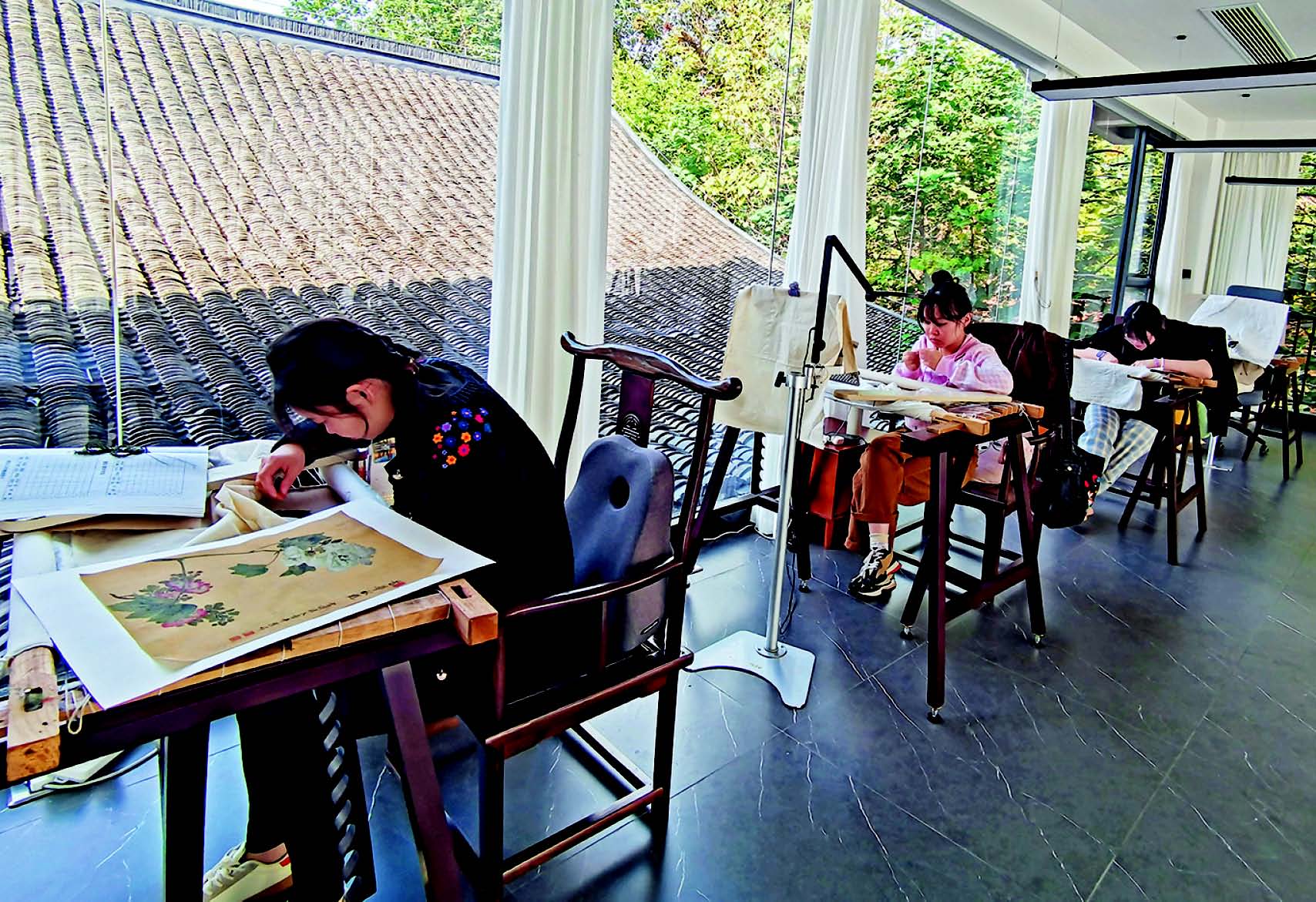

Gu embroidery breathes new life into the timeless artistry of Song Dynasty

Young artisans are dedicated to transforming paintings into exquisite embroidery crafts. — Ti Gong
“GREEN Landscape,” a stunning piece created by the Songjiang Gu embroi-dery Research Institute, captivated audiences at the Shanghai ICh Lounge at the 7th China International Import expo with its lifelike craftsmanship, reminiscent of Song Dynasty (960-1279) landscape paintings.
The Songjiang Culture Activity Center’s Gu embroidery Studio show-cased five new pieces, celebrating the preservation and evolution of this centuries-old art form.
Skilled artisans like han Ximeng refined Gu embroidery in the Ming Dynasty (1368-1644) within the Gu family of Songjiang, transforming it into a unique blend of painting and embroidery. the “embroidery Book,” published in the late Qing Dynasty (1644-1911), meticulously chronicled and maintained the Gu embroidery skills.
In the early 20th century, the Songjiang Songyun Girls’ Vocational School established embroidery class-es, producing the first generation of modern Gu embroidery masters, in-cluding Dai Mingjiao. A resurgence in Gu embroidery began in 1973 when the Songjiang Arts and Crafts Factory formed a dedicated Gu embroidery Group.
Under Dai’s mentorship, apprentic-es like Qian Yuefang and Wu Shuxin inherited and expanded the craft. China recognized Gu embroidery as one of its first national intangible cultural heritage projects in 2006, which led to the establishment of the Songjiang Gu embroidery Re-search Institute. In recent years, Gu embroidery has gained international acclaim, highlighted by Qian’s award-winning piece at expo Milano 2015, which earned a gold prize and show-cased this heritage globally.
Among the young inheritors is 26-year-old Jin Zhiting, a graduate of the Shanghai Art and Design Academy. She joined the Songjiang Gu embroi-dery Research Institute, refining her skills under Qian. “embroidery has become part of my life,” Jin said, explaining that she often continues her creative work at home after eight hours in the studio.
The preservation and growth of Gu embroideries benefit from ongoing support from various institutions. the revival efforts at the Songjiang Arts and Crafts Factory and the establish-ment of the Gu embroidery Research Institute have improved the working environment for artisans. the Songji-ang Culture Activity Center features a dedicated exhibition hall showcasing the history, techniques and lineage of Gu embroidery through tangible displays and visuals.
Additionally, the Gu embroidery Studio conducts outreach programs like “Intangible Cultural heritage in Schools” and community classes, in-creasing awareness and appreciation for this ancient art. “the best way to pass down intangible cultural heri-tage is to nurture successors. Only by fostering understanding and appre-ciation can we provide fertile ground for this art to flourish,” said Peng Yefeng, director of the center.
江苏路特数字科技有限公司 仅提供技术服务支持, 文字、图片、视频版权归属发布媒体

